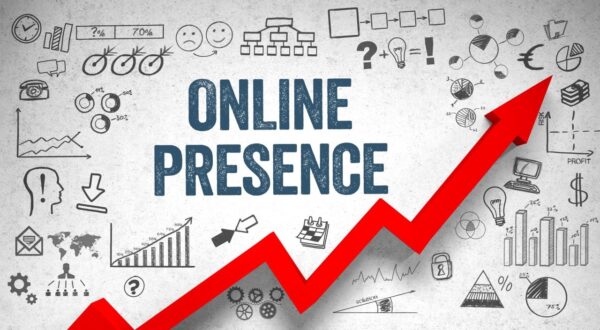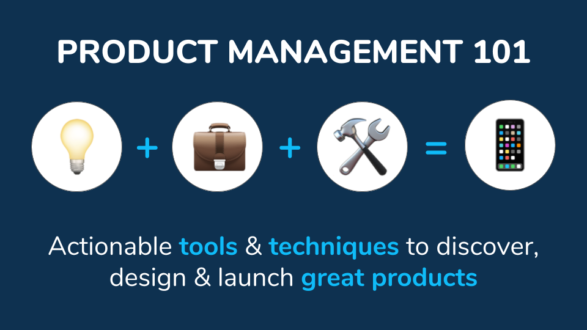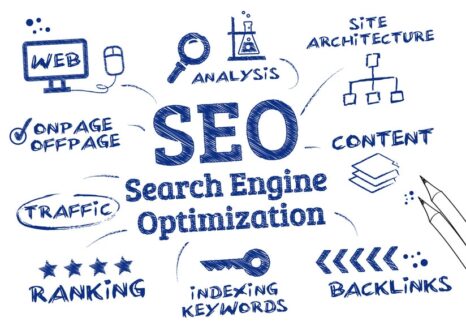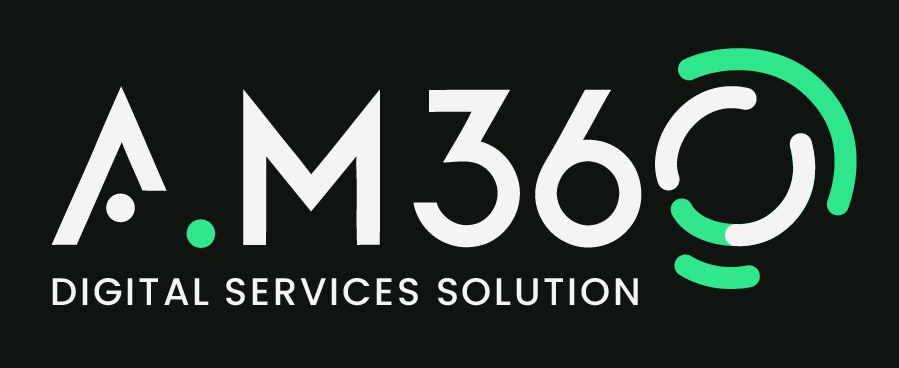
How to Boost Sales with Email Marketing: Proven Strategies for 2025
Email marketing remains one of the most cost-effective and impactful tools for driving sales, with an average ROI of 36forevery36forevery1 spent. But as we approach 2025, the landscape is evolving rapidly. To stay ahead, businesses must adopt advanced strategies that align with emerging technologies, shifting consumer behaviors, and stricter privacy regulations. In this comprehensive guide, we’ll explore actionable tactics to future-proof your email marketing strategy, boost open rates, and maximize conversions. From AI-driven automation to hyper-personalized drip campaigns, these insights will help you dominate inboxes and drive revenue in 2025 and beyond. The Evolution of Email Marketing in 2025 Email marketing is no longer just about blasting promotions to a broad audience. By 2025, success hinges on personalization, automation, and predictive analytics. Here’s what’s shaping the future: Key Trends to Watch AI-Powered Content Creation: Tools like ChatGPT and Jasper are revolutionizing how marketers craft subject lines, body copy, and CTAs. Interactive Emails: AMP for emails allows users to complete forms, browse products, and even make purchases without leaving their inbox. Privacy-First Strategies: With the demise of third-party cookies, zero-party data (information users willingly share) is critical. Predictive Segmentation: Machine learning analyzes user behavior to predict the best time, message, and channel for each subscriber. To adapt, brands must blend creativity with data-driven decision-making. Let’s dive into the strategies that will set you apart. Building a High-Quality Email List A targeted, engaged email list is the foundation of successful campaigns. Here’s how to grow yours ethically and effectively in 2025: 1. Leverage Zero-Party Data Collection Ask subscribers directly for preferences via surveys, quizzes, or preference centers. For example, skincare brand Glossier uses quizzes to tailor product recommendations. 2. Optimize Sign-Up Forms Use exit-intent pop-ups offering lead magnets (e.g., discounts, eBooks). Embed forms in high-traffic areas like blog sidebars or checkout pages. Test multi-step forms to reduce friction. Pro Tip: Offer a “content upgrade” — a downloadable resource specific to the page a visitor is viewing. Crafting Irresistible Email Subject Lines Your subject line determines whether your email gets opened or ignored. In 2025, standing out requires creativity and relevance. Winning Formulas for 2025 Curiosity Gap: “3 Secrets Your Competitors Don’t Want You to Know” Urgency: “24 Hours Left: 50% Off Ends Tonight!” Personalization: “John, Your Custom Summer Bundle is Ready” Emojis: Use sparingly to add visual punch. Case Study: A/B testing by Invesp found that personalized subject lines improve open rates by 26%. Mastering Email Automation for Sales Growth Automation ensures timely, relevant communication without manual effort. Top Workflows for 2025 Welcome Series: Nurture new subscribers with a 3-5 email sequence. Cart Abandonment: Send reminders with dynamic product images and discounts. Re-Engagement: Target inactive subscribers with surveys or exclusive offers. Tools to Use: Platforms like HubSpot and ActiveCampaign offer drag-and-drop builders for complex workflows. The Power of Email Segmentation Segmented campaigns drive 30% more opens and 50% more click-throughs (Mailchimp). Advanced Segmentation Criteria for 2025 Behavioral Data: Purchase history, website clicks, email engagement. Demographics: Location, age, job title. Predictive Analytics: Identify users likely to churn or convert. Example: Netflix segments users by viewing habits to recommend relevant shows. Designing Effective Drip Campaigns Drip campaigns deliver a series of emails triggered by user actions. Types to Implement Onboarding Series: Educate new users about your product. Educational Drips: Share tips related to a lead magnet. Sales Nurturing: Gradually build trust before pitching. Pro Tip: Use dynamic content to tailor each email based on user behavior. Cold Emailing Strategies That Convert Cold emails can yield a 15% response rate when done right. 2025 Best Practices Hyper-Personalization: Mention mutual connections or recent company news. Value-First Approach: Lead with insights, not sales pitches. Follow-Up Smartly: Send 2-3 follow-ups, varying the message. Tool Recommendation: Use Hunter.io to verify professional emails. Optimizing Newsletters for Engagement and Sales Newsletters aren’t just for updates — they’re sales drivers. 2025 Newsletter Tactics Shoppable Content: Embed product carousels with “Buy Now” buttons. User-Generated Content: Feature customer reviews or photos. Exclusive Offers: Provide subscriber-only discounts. Example: TheSkimm increased revenue by 25% using shoppable newsletters. Analyzing and Improving Open Rates and Click-Through Rates Metrics matter. Here’s how to optimize them: Boost Open Rates A/B test subject lines. Send emails between 10 AM–2 PM (local time). Clean your list regularly to remove inactive users. Increase Click-Through Rates Use clear, action-oriented CTAs like “Claim Your Discount”. Limit links to 1–2 per email. Add urgency: “Only 10 spots left!” Stat: Emails with videos can boost CTR by 65% (Campaign Monitor). Future-Proofing Your Email Marketing Strategy Stay ahead with these 2025-ready tactics: Adopt AI Tools: Use predictive analytics for send-time optimization. Test Interactive Elements: Polls, quizzes, and AMP-powered features. Prioritize Privacy: Be transparent about data usage to build trust. Resource: Read Litmus’s 2024 Email Marketing Trends Report for deeper insights. Conclusion Email marketing in 2025 demands a blend of cutting-edge technology and human-centric creativity. By leveraging automation, segmentation, and AI, you can deliver hyper-relevant content that converts. Start implementing these strategies today to build lasting relationships and drive consistent sales growth. Remember, the key to success is continuous testing and adaptation. Stay curious, stay innovative, and your email campaigns will thrive in 2025 and beyond. External Resources: HubSpot Email Marketing Guide Mailchimp’s Segmentation Study Litmus 2024 Trends Report By focusing on these strategies, you’ll not only boost sales but also establish your brand as a leader in the email marketing space. Happy campaigning!
Read More
Building a Strong Online Presence: A Complete Guide for Businesses
In today’s hyperconnected world, a robust online presence isn’t just a luxury—it’s a necessity. With 4.9 billion active internet users globally, businesses that fail to establish themselves digitally risk losing visibility, credibility, and revenue. Whether you’re a startup or an established enterprise, this guide will walk you through every step of creating and maintaining an authoritative digital footprint. From website optimization to social media presence, SEO, and online reputation management, we’ll cover actionable strategies to help you dominate your niche. Understanding Online Presence: Why It Matters What Is an Online Presence? Your online presence encompasses all digital touchpoints where your brand interacts with audiences. This includes your website, social media profiles, search engine rankings, online reviews, and even employee LinkedIn pages. It’s the collective impression your business leaves on the internet. The Importance of a Strong Online Presence Credibility Boost: 75% of consumers judge a company’s credibility based on its website design (Stanford University). Competitive Edge: Businesses with optimized websites rank 53% higher in organic search traffic (HubSpot). Revenue Growth: Companies with active social media strategies see 20-40% higher customer retention rates (Bain & Company). Key Statistics to Consider 93% of online experiences begin with a search engine (BrightEdge). 88% of consumers research products online before purchasing (Retail Dive). Mobile devices drive 58% of global website traffic (Statista). Website Optimization: The Foundation of Your Digital Identity Your website is the cornerstone of your online presence. A poorly optimized site can repel visitors, hurt SEO rankings, and undermine trust. 1. Mobile Responsiveness With mobile traffic surpassing desktop, Google prioritizes mobile-first indexing. Use tools like Google’s Mobile-Friendly Test to ensure your site adapts seamlessly to all devices. 2. Page Speed Optimization Pages that load in 2 seconds have a 9% bounce rate, while those taking 5 seconds suffer a 38% bounce rate (Portent). Improve speed by: Compressing images with tools like TinyPNG. Enabling browser caching. Using Content Delivery Networks (CDNs) like Cloudflare. 3. User Experience (UX) Design Navigation: Simplify menus with clear categories (e.g., “Services,” “Blog,” “Contact”). CTAs: Use action-oriented buttons like “Get Started” or “Download the Guide.” Accessibility: Follow WCAG guidelines for color contrast and screen reader compatibility. 4. Content Quality Publish original, value-driven content that addresses audience pain points. For example, a SaaS company could offer free e-books or webinars on industry challenges. Building a Social Media Presence: Engage and Convert Choosing the Right Platforms B2B: LinkedIn, Twitter. B2C: Instagram, TikTok, Facebook. Niche Audiences: Pinterest (e-commerce), Reddit (communities). Content Strategy Tips Educational Posts: Share how-to videos or infographics. User-Generated Content (UGC): Repost customer reviews or testimonials. Consistency: Use scheduling tools like Hootsuite to maintain a steady cadence. Case Study: Glossier’s UGC Success Beauty brand Glossier attributes 70% of its social media content to customer photos, fostering community and driving $100M+ in annual revenue (Forbes). Mastering SEO for Visibility On-Page SEO Keyword Research: Use Ahrefs or SEMrush to identify terms like “online presence” and related long-tail phrases. Meta Tags: Craft compelling titles (under 60 characters) and descriptions (under 160 characters). Technical SEO Fix broken links with Screaming Frog. Implement schema markup to enhance rich snippets. Off-Page SEO Earn backlinks through guest blogging on authoritative sites like Entrepreneur or Neil Patel’s blog. Digital Marketing Strategies to Amplify Reach 1. Pay-Per-Click (PPC) Advertising Run targeted Google Ads campaigns with a focus on high-intent keywords. 2. Email Marketing Segment lists based on behavior (e.g., cart abandoners, loyal customers) and personalize subject lines. 3. Content Marketing Publish pillar posts (3,000+ words) to establish topical authority. For example, “The Ultimate Guide to Online Reputation Management.” Enhancing Customer Engagement 1. Live Chat and Chatbots Tools like Intercom reduce response times by 80% and increase satisfaction (IBM). 2. Personalized Experiences Use CRM platforms like HubSpot to track customer interactions and tailor recommendations. 3. Feedback Loops Send post-purchase surveys via Typeform and publicly respond to reviews on Google My Business. Managing Online Reputation 1. Monitor Mentions Set up Google Alerts for your brand name and competitors. 2. Address Negative Reviews Apologize publicly, then resolve issues offline. Studies show 45% of consumers forgive brands that respond to complaints (ReviewTrackers). 3. Showcase Positive Feedback Embed testimonials on your homepage using Trustpilot widgets. Personal Branding for Business Leaders Why It Matters CEOs with strong personal brands, like Elon Musk, can sway stock prices and consumer trust. Strategies Publish thought leadership articles on Medium. Host LinkedIn Live sessions on industry trends. Collaborate with influencers for co-branded content. Maintaining Brand Consistency 1. Visual Identity Use Canva templates to standardize logos, fonts, and colors across platforms. 2. Tone of Voice Develop a style guide (e.g., casual vs. formal) and train your team to follow it. 3. Cross-Platform Synergy Align website messaging with social media campaigns. For example, promote a blog post on Twitter with a teaser quote. Measuring and Improving Your Online Presence Key Metrics Traffic Sources: Google Analytics. Social Engagement: Sprout Social. SEO Health: Moz’s Domain Authority. A/B Testing Experiment with headlines, CTAs, or landing page designs to optimize conversions. Future Trends to Watch AI-Powered Chatbots: Gartner predicts 70% of customer interactions will involve AI by 2025. Voice Search Optimization: 55% of households will own smart speakers by 2026 (OC&C Strategy Consultants). Video Dominance: YouTube and TikTok will drive 82% of consumer internet traffic by 2024 (Cisco). Final Thoughts Building a strong online presence demands strategy, consistency, and adaptability. By optimizing your website, leveraging SEO, engaging audiences on social media, and safeguarding your reputation, you’ll position your brand as an industry leader. Start auditing your digital footprint today—your future customers are already searching. Ready to take the next step? Bookmark this guide, share it with your team, and begin implementing one strategy at a time. The digital world waits for no one.
Read More
Graphic Design Essentials: How to Create Stunning Visuals for Your Brand
Graphic design is the silent ambassador of your brand. In a world where visual content dominates, mastering the art of graphics designing is no longer optional—it’s essential. Whether you’re crafting a logo, designing a website, or creating social media posts, the right visuals can elevate your brand, build trust, and drive engagement. This comprehensive guide dives deep into the core principles of graphic design, offering actionable insights into logo design, typography, color theory, branding, and more. You’ll also learn how to leverage tools like Adobe Photoshop and Canva, integrate UX design principles, and create visuals that resonate with your audience. Let’s transform your brand’s visual identity. Understanding Graphic Design Basics What Is Graphic Design? Graphic design is the process of communicating ideas through visual content. It combines imagery, text, and color to solve problems and convey messages. From billboards to mobile apps, graphic design shapes how we interact with the world. Core Principles of Effective Design To create visuals that stand out, follow these foundational principles: Balance: Distribute elements evenly (symmetrical or asymmetrical). Contrast: Use opposing colors, sizes, or fonts to highlight key elements. Alignment: Ensure every item has a visual connection to others. Hierarchy: Guide the viewer’s eye through size, color, or placement. Repetition: Reinforce branding by repeating styles (e.g., fonts, colors). Crafting a Memorable Logo Elements of a Great Logo A logo is the face of your brand. Iconic logos like Apple or Nike succeed because they’re: Simple: Easy to recognize at a glance. Versatile: Scalable for business cards, billboards, and apps. Timeless: Avoids fleeting trends. Relevant: Aligns with your brand’s mission. Steps to Design a Logo Research Your Audience: Understand their preferences and pain points. Sketch Ideas: Start with rough drafts on paper. Refine Digitally: Use tools like Adobe Illustrator for vector designs. Test Across Platforms: Ensure it looks great in black/white and on small screens. Common Logo Design Mistakes Overcomplicating the design. Using generic stock icons. Ignoring scalability. For inspiration, explore Logo Design Love, a resource showcasing award-winning logos. Typography Mastery Principles of Effective Typography Typography isn’t just about choosing pretty fonts—it’s about readability and emotion. Key principles include: Legibility: Ensure text is clear in all sizes. Font Pairing: Combine serif and sans-serif fonts for contrast. Whitespace: Give text room to breathe. Choosing the Right Fonts Serif Fonts (e.g., Times New Roman): Traditional, trustworthy. Sans-Serif Fonts (e.g., Helvetica): Modern, clean. Script Fonts (e.g., Brush Script): Elegant, creative. Tools for Typography Use Google Fonts for free, web-safe options, or explore Adobe Fonts for premium choices. Color Theory in Design The Psychology of Color Colors evoke emotions: Red: Energy, urgency (used by Coca-Cola). Blue: Trust, calm (favored by Facebook and LinkedIn). Green: Growth, health (think Whole Foods). Creating a Cohesive Color Palette Start with a Base Color: Align with your brand’s personality. Use the 60-30-10 Rule: 60% dominant, 30% secondary, 10% accent. Test for Accessibility: Ensure contrast for readability (use WebAIM’s Contrast Checker). Tools for Color Selection Adobe Color: Generate palettes from images. Coolors: Quick palette generation with a spacebar tap. Building a Strong Brand Identity Consistency Is Key Your visuals should be instantly recognizable. Starbucks’ consistent use of green and its mermaid logo across cups, ads, and apps is a prime example. Components of Visual Identity Logo: The cornerstone. Color Palette: Defines mood. Typography: Reinforces voice. Imagery Style: Photos, illustrations, or icons. Case Study: Airbnb’s 2014 rebrand focused on a cohesive visual identity, leading to a 30% increase in bookings (source). Tools of the Trade: Adobe Photoshop & Canva Adobe Photoshop Tips for Professionals Layer Masks: Non-destructive edits. Smart Objects: Preserve image quality when scaling. Actions: Automate repetitive tasks. Canva Tips for Non-Designers Templates: Customize pre-made designs. Brand Kit: Save logos, colors, and fonts. Collaboration: Share designs with teams in real-time. Canva’s Design School offers free courses for beginners. Integrating UX Design Principles UX vs. UI: What’s the Difference? UX (User Experience): Focuses on user journey and functionality. UI (User Interface): Deals with visual touchpoints like buttons and icons. Enhancing UX with Visuals Intuitive Navigation: Use clear icons and buttons. Loading Animations: Keep users engaged during waits. Accessibility: Design for screen readers and color blindness. Creating Engaging Visual Content Types of Visual Content Infographics: Simplify complex data. Videos: Boost engagement on social media. Interactive Content: Quizzes, polls, or 360° images. Optimizing for Platforms Instagram: Use vertical videos (9:16 ratio). LinkedIn: Prioritize professional imagery and charts. Pinterest: Focus on high-resolution DIY tutorials. Best Practices for Stunning Visuals Stay Updated with Trends Follow platforms like Behance or Dribbble for inspiration. Seek Feedback Use tools like UsabilityHub to test designs with real users. Balance Trends and Timelessness While gradients and 3D elements are trendy, ensure your core branding remains classic. Conclusion Mastering graphics designing empowers you to tell your brand’s story visually. From logo design to UX principles, every detail matters. Start small: refine your color palette, experiment with Canva, or redesign a social media post. Remember, great design isn’t about perfection—it’s about connection. Ready to create stunning visuals? Pick one tip from this guide and apply it today. Your brand’s future self will thank you. By integrating these strategies, you’ll not only enhance your brand’s aesthetics but also build a loyal audience that resonates with your vision. For further learning, explore Adobe’s Creative Cloud Tutorials or enroll in Coursera’s Graphic Design Specialization.
Read More
Video Editing Tips: How to Create Professional-Quality Videos
In today’s digital age, video content dominates social media, streaming platforms, and marketing strategies. Whether you’re crafting a YouTube vlog, a cinematic short film, or a corporate presentation, the difference between amateur and professional work often lies in the editing process. This guide dives deep into video editing software and techniques to elevate your projects, covering everything from color grading to storytelling. By the end, you’ll have actionable strategies to create polished, engaging videos that captivate audiences. 1. Choosing the Right Video Editing Software The foundation of great video editing starts with selecting the right tools. With countless options available, understanding your needs and budget is critical. Free vs. Paid Software Free options like DaVinci Resolve, HitFilm Express, and iMovie are ideal for beginners or those on a tight budget. They offer robust features like multi-track editing and basic color correction. However, paid software like Adobe Premiere Pro, Final Cut Pro, and Sony Vegas Pro unlocks advanced tools such as AI-driven effects, 3D compositing, and collaborative workflows. Top Video Editing Software in 2023 Adobe Premiere Pro: Industry-standard for its seamless integration with Photoshop and After Effects. Final Cut Pro: A favorite among Mac users for its magnetic timeline and optimized performance. DaVinci Resolve: Combines professional-grade color grading and editing in one free/paid package. Features to Look For Multi-track timeline: Essential for layering clips, audio, and effects. GPU acceleration: Reduces rendering times for 4K or 8K projects. Plugin support: Expands functionality with tools like Red Giant for VFX. For a detailed comparison, check out Software Advice’s 2023 Editing Tools Report. 2. Mastering the Basics: Timeline Editing and Organization Before diving into advanced techniques, nail the fundamentals. Trimming and Cutting Clips Use ripple edits to remove gaps automatically or rolling edits to adjust clip lengths without disrupting synchronization. Most software offers shortcut keys (e.g., C for blade tool in Premiere Pro). Organizing Media Create bins or folders for raw footage, audio, and graphics. Label clips by scene or take (e.g., “Scene1_Take3”) to streamline your workflow. 3. Color Grading: Enhancing Mood and Visual Consistency Color grading transforms raw footage into a cohesive visual story. Color Correction vs. Grading Correction: Fixes exposure, white balance, and contrast. Grading: Applies creative looks (e.g., teal and orange for blockbuster films). Tools and Techniques Waveform scopes: Ensure colors stay within broadcast-safe ranges. LUTs (Look-Up Tables): Apply preset grades like “Cinematic Warm” or design custom ones. Secondary correction: Isolate and adjust specific colors (e.g., enhancing skies). For inspiration, study the color palettes in Mad Max: Fury Road or Blade Runner 2049. 4. Seamless Transitions: Keeping Viewers Engaged Transitions guide the audience between scenes without jarring interruptions. Types of Transitions Cuts: The most common; ensure continuity with match cuts (e.g., matching action between shots). Dissolves: Suggest passage of time. Wipes: Dynamic transitions using motion (e.g., Star Wars’ iconic horizontal wipes). Pro Tip Avoid overusing flashy transitions. Let the story dictate the style—subtlety often wins. 5. Video Effects: Adding Polish and Creativity From explosions to text overlays, video effects amplify your narrative. Popular Effects Slow motion: Use Twixtor or Optical Flow for smooth results. Text animations: Tools like Adobe After Effects create kinetic typography. Green screen: Key out backgrounds with DaVinci Resolve’s Delta Keyer. Plugins to Explore Red Giant Universe: Offers glitch effects and light leaks. Boris FX: Adds realistic lens flares and particle simulations. 6. Sound Design: The Invisible Art of Emotion Poor audio quality can ruin even the most visually stunning video. Key Components Dialogue: Use noise reduction tools like Audacity or Adobe Audition. Sound effects: Layer ambient sounds (e.g., footsteps, rain) from platforms like Epidemic Sound. Music: Set the tone with royalty-free tracks from Artlist or PremiumBeat. Mixing Tips Keep dialogue at -6dB and music at -18dB to avoid clipping. Use keyframes to fade audio in/out smoothly. 7. Storytelling Techniques: Crafting a Narrative Editing shapes the story’s pace, emotion, and clarity. Structural Strategies Three-act structure: Setup, confrontation, resolution. Pacing: Alternate between fast cuts (action scenes) and long takes (emotional moments). Emotional Impact Juxtaposition: Contrast shots to highlight themes (e.g., wealth vs. poverty). Montage: Condense time while showing progress (e.g., training sequences in Rocky). 8. Cinematic Editing: Achieving the Film Look Cinematic editing mimics the techniques of big-screen productions. Key Elements Aspect ratio: Use 2.35:1 for a widescreen feel. Depth of field: Blur backgrounds to focus on subjects. B-roll: Cutaway shots add context and prevent monotony. Color Palettes Desaturated tones with high contrast evoke drama, while pastels create whimsy. 9. YouTube Video Editing: Optimizing for Engagement YouTube’s algorithm rewards watch time and retention. Best Practices Hook viewers in 15 seconds: Start with a teaser or question. End screens: Promote other videos or encourage subscriptions. SEO: Include keywords like “video editing software” in titles and descriptions. For analytics insights, visit YouTube Creator Academy. 10. Advanced Tips and Workflow Optimization Speed up your process with these pro strategies. Keyboard Shortcuts J/K/L: Rewind, pause, fast-forward. Cmd/Ctrl + Z: Undo mistakes quickly. Proxy Editing Edit 4K footage smoothly by working with lower-resolution proxies. 11. Common Mistakes to Avoid Overediting: Too many effects distract from the story. Ignoring audio: Invest in a decent microphone. Skipping backups: Save versions hourly to avoid losing progress. Conclusion: Practice Makes Perfect Mastering video editing software and techniques takes time, but each project hones your skills. Experiment with color grading, refine your transitions, and prioritize storytelling. Remember, even Oscar-winning editors started with a single cut. Now, grab your footage and start creating! By implementing these tips, you’ll not only enhance your videos but also build a portfolio that stands out in today’s competitive landscape. Happy editing! External Resources: Adobe Color Grading Guide Science of Storytelling in Film DaVinci Resolve Tutorials
Read More
Project Management Hacks: How to Complete Projects Faster and Smarter
Project management is the backbone of successful business operations. Whether you’re launching a product, organizing an event, or leading a software development team, the ability to manage projects efficiently determines whether you meet deadlines, stay within budget, and achieve your goals. However, even seasoned professionals struggle with delays, miscommunication, and scope creep. In this comprehensive guide, you’ll discover actionable strategies to optimize your project management process, leverage cutting-edge tools, and foster team collaboration to deliver results faster and smarter. From agile methodologies to risk mitigation frameworks, we’ll cover every facet of modern project management to help you build topical authority and drive success. 1. Agile Project Management: Flexibility Meets Structure What Is Agile Project Management? Agile project management is a dynamic approach that prioritizes iterative progress, collaboration, and customer feedback. Unlike traditional “waterfall” methods, which follow a linear sequence, agile breaks projects into smaller cycles called sprints, allowing teams to adapt quickly to changes. Key Principles of Agile: Customer collaboration over rigid contracts. Responding to change over following a fixed plan. Delivering working solutions incrementally. Agile in Action: The Spotify Model Spotify’s famed “Squad Model” exemplifies agile success. Teams (or “squads”) operate autonomously, focusing on specific features, while aligning with broader company goals through “chapters” and “guilds.” This structure reduced time-to-market by 30% and boosted innovation. Benefits for Speed and Efficiency: Faster Feedback Loops: Daily stand-ups and sprint reviews ensure issues are addressed promptly. Reduced Waste: By focusing on high-priority tasks, teams avoid over-investing in low-impact features. Enhanced Accountability: Clear roles (Scrum Master, Product Owner) keep everyone aligned. Learn more about Agile principles from the Agile Manifesto. 2. Mastering Project Planning: Blueprints for Success The 5 Pillars of Effective Project Planning Define Scope: Outline deliverables, exclusions, and boundaries to prevent scope creep. Set SMART Goals: Ensure objectives are Specific, Measurable, Achievable, Relevant, and Time-bound. Create a Work Breakdown Structure (WBS): Divide projects into manageable tasks. Develop Timelines: Use Gantt charts to visualize dependencies and milestones. Allocate Resources: Assign budgets, tools, and personnel early. Tools to Streamline Planning Trello: Visualize tasks with Kanban boards. Microsoft Project: Build detailed Gantt charts. Smartsheet: Combine spreadsheets with automation. Pro Tip: Use historical data from past projects to estimate timelines more accurately. 3. Task Delegation: Empowering Your Team Why Delegation Fails (And How to Fix It) A Harvard Business Review study found that 41% of managers struggle with delegation due to fear of losing control or time constraints. However, effective delegation is critical for scaling productivity. The RACI Matrix: Clarify responsibilities with this framework: Responsible: Who completes the task? Accountable: Who approves it? Consulted: Who provides input? Informed: Who needs updates? Delegation Tools to Try Asana: Assign tasks with deadlines and priorities. Monday.com: Track progress in real-time. Case Study: At Netflix, managers delegate decision-making authority to frontline employees, reducing bottlenecks and accelerating innovation. 4. Time Management Techniques for Project Managers The Eisenhower Matrix: Prioritize Like a Pro Categorize tasks into four quadrants: Urgent & Important: Do immediately. Important, Not Urgent: Schedule. Urgent, Not Important: Delegate. Neither: Eliminate. Combatting Parkinson’s Law Work expands to fill the time allotted. Use timeboxing (e.g., Pomodoro Technique) to set strict limits. Tools like Toggl or Clockify track hours and identify inefficiencies. Pro Hack: Batch similar tasks (e.g., emails, meetings) to minimize context-switching. 5. Productivity Tools: The Digital Advantage Top Tools for 2024 ClickUp: All-in-one platform for tasks, docs, and goals. Jira: Agile-focused tool for software teams. Notion: Customizable workspace for collaboration. Integration Tip: Sync tools with Zapier to automate workflows (e.g., Slack notifications when tasks are overdue). 6. Workflow Optimization: Lean and Mean Lean Methodology: Eliminate Waste Toyota’s 5S Framework: Sort: Remove unnecessary items. Set in Order: Organize tools for efficiency. Shine: Maintain cleanliness. Standardize: Create consistent processes. Sustain: Regularly audit workflows. Kanban Boards: Visualize work stages (To-Do, Doing, Done) to identify bottlenecks. 7. Team Collaboration: Building Synergy Foster Psychological Safety Google’s Project Aristotle found that psychological safety—where team members feel safe to take risks—is the top predictor of high-performing teams. Tools for Collaboration: Slack: Instant messaging with channel organization. Miro: Virtual whiteboarding for brainstorming. Conflict Resolution Strategy: Use the “Interest-Based Relational Approach” to focus on shared goals. 8. Risk Management: Preparing for the Unexpected 4-Step Risk Management Framework Identify Risks: Brainstorm potential issues (e.g., budget overruns, tech failures). Analyze Impact: Use a risk matrix to assess likelihood and severity. Develop Mitigation Plans: Create fallback strategies (e.g., backup vendors). Monitor Continuously: Review risks in weekly check-ins. NASA’s Approach: The space agency conducts “Pre-Mortem” sessions to anticipate failures before launch. Conclusion: Integrate, Adapt, and Succeed Completing projects faster and smarter isn’t about working harder—it’s about working strategically. By combining agile methodologies, robust planning, and the right tools, you can transform your project management approach. Start by implementing one or two hacks, measure their impact, and scale what works. Remember, the best project managers are lifelong learners. Stay curious, experiment with new tools, and foster a culture of continuous improvement. Ready to level up? Explore these PMI resources for advanced strategies and certifications. By integrating these strategies, you’ll not only meet deadlines but also build a reputation for delivering exceptional results. Happy managing! 🚀
Read More
Product Management 101: How to Successfully Launch and Scale a Product
Introduction In today’s hyper-competitive market, launching and scaling a product isn’t just about having a groundbreaking idea—it’s about executing a meticulously crafted strategy. Product management sits at the heart of this process, bridging the gap between vision and reality. Whether you’re a startup founder, an aspiring product manager, or a seasoned professional, understanding the fundamentals of product management is critical to turning concepts into successful, scalable products. This guide dives deep into the end-to-end process of product management, from crafting a winning product strategy to leveraging customer feedback for continuous improvement. You’ll learn actionable frameworks, real-world examples, and proven methodologies to navigate the complexities of product development, MVP testing, and scaling. What Is Product Management? Defining the Role of a Product Manager Product management is the art and science of guiding a product from ideation to market success. It involves balancing business objectives, technical feasibility, and user needs to deliver value. A product manager (PM) acts as the “CEO of the product,” owning its roadmap, prioritizing features, and collaborating with cross-functional teams like engineering, design, and marketing. Key responsibilities include: Defining the product vision and strategy. Conducting market and competitive analysis. Overseeing product development using agile methodologies. Validating ideas through MVP testing. Iterating based on customer feedback. According to Product Plan, effective product management requires a blend of strategic thinking, communication, and data-driven decision-making. Why Product Management Matters Without structured product management, even the most innovative products risk failure. PMs ensure alignment between stakeholder expectations, resource allocation, and market demand. They mitigate risks, optimize user experience (UX), and drive sustainable growth. Crafting a Winning Product Strategy Aligning with Business Goals A product strategy outlines how your product will achieve business objectives. Start by answering: Vision: What long-term problem does your product solve? Mission: How will it deliver value in the next 1–3 years? Goals: What measurable outcomes define success (e.g., revenue, user acquisition)? For example, Spotify’s strategy to “unlock the potential of human creativity” drives features like personalized playlists and podcast integrations. Building a Product Roadmap A roadmap translates strategy into actionable steps. Prioritize features using frameworks like: RICE Scoring: Evaluate Reach, Impact, Confidence, and Effort. MoSCoW Method: Categorize tasks as Must-have, Should-have, Could-have, or Won’t-have. Tools like Aha! or Jira help visualize timelines and dependencies. Risk Management in Product Strategy Identify potential pitfalls early: Market Risks: Will demand shift? Technical Risks: Are there scalability challenges? Operational Risks: Can your team execute on time? Pro tip: Use SWOT analysis (Strengths, Weaknesses, Opportunities, Threats) to anticipate challenges. Conducting Market Research for Product Success The Importance of Market Research Market research validates assumptions and uncovers gaps in the market. It answers: Who are your target customers? What pain points do they face? How are competitors addressing these needs? Netflix, for instance, continuously analyzes viewing habits to refine its content recommendations. Methods for Effective Market Research Surveys and Interviews: Use tools like SurveyMonkey or Typeform to gather quantitative and qualitative data. Competitor Analysis: Audit competitors’ strengths and weaknesses using SEMrush or SpyFu. Trend Analysis: Leverage reports from Nielsen or Pew Research. Turning Insights into Action Segment your audience, create user personas, and map customer journeys to tailor your product strategy. The Product Development Lifecycle From Ideation to Launch Ideation: Brainstorm solutions using techniques like design thinking. Feasibility Analysis: Assess technical and financial viability. Design: Wireframe UX/UI with tools like Figma or Sketch. Development: Build using agile methodologies (more on this later). Testing: Conduct QA and usability tests. Launch: Plan a phased rollout to mitigate risks. Cross-Functional Collaboration PMs work with: Engineers: Ensure technical feasibility. Designers: Optimize user experience. Marketers: Craft go-to-market (GTM) strategies. MVP Testing: Validating Your Product Hypothesis What Is a Minimum Viable Product (MVP)? An MVP is the simplest version of your product that delivers core value. It’s designed to test hypotheses with minimal resources. Dropbox, for example, started with a demo video to gauge interest before building its full platform. Steps to Build an MVP Identify the core problem your product solves. Define key features (focus on “must-haves”). Develop a prototype using no-code tools like Bubble or Adalo. Test with a small user group. Iterating Based on Feedback Use metrics like activation rate and Net Promoter Score (NPS) to refine your MVP. Tools like Hotjar track user behavior, while A/B testing tools like Optimizely validate changes. Leveraging Customer Feedback for Growth Collecting Feedback Effectively In-App Surveys: Tools like Intercom or Qualtrics. User Interviews: Dive deep into pain points. Social Listening: Monitor mentions on Reddit or Twitter. Analyzing and Acting on Feedback Categorize feedback into themes (e.g., usability, feature requests). Prioritize changes that align with your product strategy. Closing the Feedback Loop Inform users how their input shaped updates. This builds loyalty and encourages ongoing engagement. Scaling Your Product: Challenges and Strategies Understanding Scaling Challenges Technical Debt: Rapid growth can strain infrastructure. User Retention: Scaling too fast may dilute UX. Team Scalability: Ensure processes and hiring keep pace. Scaling Strategies That Work Automation: Use tools like Zapier to streamline workflows. Geographic Expansion: Adapt to local markets (e.g., Uber’s city-by-city rollout). Feature Expansion: Add premium tiers or integrations. Case Study: Airbnb scaled by standardizing host onboarding and leveraging user-generated content. Agile Methodologies in Product Management Why Agile Works Agile breaks development into iterative cycles (sprints), enabling rapid adaptation. Benefits include: Faster time-to-market. Improved team morale. Higher alignment with user needs. Popular Agile Frameworks Scrum: Roles (Scrum Master, Product Owner), sprints, and daily standups. Kanban: Visualize workflows using boards (Try Trello). Implementing Agile Successfully Train teams on agile principles. Use retrospectives to refine processes. Balance flexibility with long-term vision. Optimizing User Experience (UX) UX Principles for Product Managers Simplicity: Reduce cognitive load (e.g., Google’s clean homepage). Consistency: Standardize UI elements. Accessibility: Follow WCAG guidelines. Measuring UX Success Track metrics like task success rate, error rate, and time-on-task. Tools like UsabilityHub offer actionable insights. Competitive Analysis: Staying Ahead of the Curve How to Conduct a Competitive Analysis Identify direct and indirect competitors. Analyze their offerings, pricing, and marketing. Use SWOT to uncover opportunities. Tools for Competitive Intelligence SimilarWeb: Traffic and engagement metrics. Crunchbase: Funding and team insights. Turning Insights into Action Differentiate through unique features, pricing models, or superior customer support. Common Pitfalls in Product Management (And How to Avoid Them) Ignoring Market Signals: Stay attuned to shifting trends. Overloading the
Read More
The Role of Workforce Management in Business Success
How Strategic Workforce Management Drives Productivity, Compliance, and Growth In today’s fast-paced business environment, organizations face unprecedented challenges: shifting labor laws, the rise of remote work, and the demand for real-time data to drive decisions. At the heart of navigating these complexities lies workforce management—a systematic approach to optimizing employee productivity, ensuring compliance, and aligning human capital with organizational goals. From employee scheduling to workforce analytics, effective workforce management is no longer optional—it’s the backbone of sustainable business success. This article explores the critical components of workforce management, including HR software, productivity tracking, team management, and payroll solutions, while addressing modern challenges like remote work and labor laws. Let’s dive into how businesses can harness these tools to build resilient, future-ready operations. Chapter 1: Workforce Management Defined What Is Workforce Management? Workforce management (WFM) refers to the processes and technologies businesses use to maximize employee efficiency, reduce operational costs, and maintain compliance. It encompasses: Employee scheduling Productivity tracking Labor forecasting Payroll solutions Compliance with labor laws By integrating these elements, companies can align their workforce with strategic objectives while fostering employee satisfaction. According to a Gartner report, organizations that prioritize WFM see a 20–30% improvement in operational efficiency. Chapter 2: The Pillars of Effective Workforce Management 1. Employee Scheduling: Balancing Demand and Capacity Effective employee scheduling ensures the right people are in the right roles at the right time. Poor scheduling leads to understaffing, overtime costs, and burnout. Modern tools like HR software automate shift planning by analyzing historical data, seasonal trends, and employee availability. Example: Retail giants like Walmart use AI-driven scheduling systems to align staff hours with customer foot traffic, reducing labor costs by 15% (McKinsey & Company). Key Benefits: Minimizes overtime expenses. Ensures compliance with labor laws (e.g., mandatory break times). Boosts employee morale through fair shift分配. 2. HR Software: The Digital Backbone of Workforce Management Modern HR software centralizes critical functions like recruitment, onboarding, and performance reviews. Platforms like BambooHR and Workday integrate payroll solutions, productivity tracking, and compliance tools into a single dashboard. Case Study: A mid-sized tech firm reduced administrative workload by 40% after adopting SAP SuccessFactors for automated leave management and real-time workforce analytics (Deloitte). Why It Matters: Streamlines communication across remote teams. Reduces errors in payroll solutions. Provides actionable insights via workforce analytics. 3. Productivity Tracking: Measuring What Matters Productivity tracking tools like Time Doctor and Hubstaff monitor employee output, identify bottlenecks, and highlight top performers. However, balancing surveillance with trust is critical—especially in remote work environments. Statistic: Companies using productivity tools report a 25% increase in output, according to Forbes. Best Practices: Set clear KPIs aligned with business goals. Use workforce analytics to refine workflows. Avoid micromanagement to maintain morale. 4. Team Management: Leading in a Hybrid World The rise of remote work has redefined team management. Leaders must foster collaboration across time zones while addressing isolation and burnout. Tools like Slack and Microsoft Teams enable real-time communication, while project management platforms like Asana keep tasks on track. Example: GitLab, a fully remote company, attributes its success to transparent communication and asynchronous workflows (GitLab Remote Report). Strategies for Success: Regular check-ins to maintain engagement. Invest in upskilling for distributed teams. Leverage workforce analytics to assess team performance. 5. Labor Laws: Navigating Compliance Risks Non-compliance with labor laws can result in fines, lawsuits, and reputational damage. Key areas include: Overtime regulations (e.g., FLSA in the U.S.) Minimum wage requirements Workplace safety standards (OSHA) HR software with built-in compliance features automates record-keeping and alerts managers to potential violations. For instance, Paycor offers tools tailored to regional regulations. Statistic: 52% of businesses face labor-related penalties due to manual compliance processes (SHRM). 6. Payroll Solutions: Accuracy Meets Efficiency Manual payroll processing is error-prone and time-consuming. Integrated payroll solutions like Gusto and ADP automate tax filings, benefits administration, and direct deposits. These systems sync with HR software to ensure seamless data flow. Case Study: A manufacturing company reduced payroll errors by 90% after switching to UKG Ready (UKG Case Study). Advantages: Eliminates manual data entry. Ensures timely payments, boosting employee trust. Integrates with workforce analytics for cost forecasting. 7. Workforce Analytics: Data-Driven Decision Making Workforce analytics transforms raw data into actionable insights. By analyzing trends in attendance, turnover, and productivity, businesses can: Predict staffing needs. Identify high-potential employees. Mitigate risks (e.g., burnout, compliance gaps). Tools like Tableau and Visier visualize data, making it accessible to non-technical stakeholders. Example: Coca-Cola used predictive analytics to reduce turnover by 15% in its supply chain division (Harvard Business Review). Chapter 3: Overcoming Modern Workforce Challenges Remote Work: Managing Dispersed Teams The shift to remote work demands new strategies for team management and productivity tracking. Solutions include: Virtual onboarding programs. Cybersecurity training. Tools like Zoom and Trello for collaboration. Statistic: 74% of companies plan to adopt hybrid work permanently (Microsoft Work Trend Index). Compliance in a Globalized Economy Businesses operating across borders must navigate varying labor laws. Platforms like Papaya Global simplify international payroll and compliance. Chapter 4: The Future of Workforce Management Emerging trends like AI-driven employee scheduling, blockchain for payroll solutions, and immersive training via AR/VR are reshaping WFM. Companies that adopt these innovations early will gain a competitive edge. Conclusion: Workforce Management as a Growth Catalyst From employee scheduling to workforce analytics, effective workforce management is the cornerstone of business success. By leveraging HR software, adhering to labor laws, and embracing remote work tools, organizations can build agile, compliant, and high-performing teams. Investing in WFM isn’t just about surviving—it’s about thriving in an era of constant change. External Links for Further Reading: SHRM’s Guide to Labor Law Compliance Gartner’s Future of Work Trends Microsoft’s Hybrid Work Toolkit Deloitte’s Workforce Analytics Study By integrating these strategies, businesses can transform workforce management from a cost center into a strategic asset.
Read More
SEO Best Practices for 2025: How to Rank Higher on Google
Search engine optimization (SEO) remains the cornerstone of digital visibility, but the strategies that worked a decade ago—or even last year—are no longer sufficient. As Google’s algorithms evolve, so must your approach. By 2025, ranking higher will demand a holistic strategy that balances on-page SEO, off-page SEO, technical SEO, and cutting-edge keyword research. In this 2,500+ word guide, we’ll dissect the latest search ranking factors and actionable tactics to future-proof your website. Introduction: Why SEO Still Matters in 2025 Google processes over 8.5 billion searches daily, and 68% of online experiences begin with a search engine. Despite the rise of AI chatbots and voice search, SEO remains indispensable for driving organic traffic. However, the game has changed: User intent now trumps keyword density. Core Web Vitals and page experience are critical ranking signals. E-E-A-T (Experience, Expertise, Authoritativeness, Trustworthiness) defines content quality. To stay ahead, marketers must adopt a semantic SEO approach, prioritizing context over rigid keyword matching. Let’s dive into the pillars of modern SEO. 1. On-Page SEO: Optimizing Content for Humans and Algorithms On-page SEO focuses on elements you control directly on your website. In 2025, this means aligning with Google’s emphasis on user experience (UX) and topical relevance. Keyword Research: The Foundation of On-Page Success Start with keyword research to identify terms your audience uses. Tools like Ahrefs, SEMrush, and Google Keyword Planner help uncover: Long-tail keywords (e.g., “best running shoes for flat feet” instead of “running shoes”). LSI keywords (Latent Semantic Indexing) like “durability” or “arch support” to add context. Zero-volume keywords (emerging queries not yet tracked by tools). Prioritize search intent by analyzing the top 10 results for your target keyword. Are they blog posts, product pages, or guides? Match your content format to user expectations. Content Optimization: Beyond Keywords Google’s 2023 Helpful Content Update rewards content that satisfies searchers. Optimize by: Structuring articles with H2/H3 headers for readability. Using internal links to guide users to related topics (e.g., linking “technical SEO” to a dedicated guide). Incorporating multimedia (videos, infographics) to boost engagement. Applying TF-IDF analysis to ensure comprehensive coverage of subtopics. Example: A page targeting “content optimization” should explain formatting, readability tools like Hemingway, and image alt-text best practices. Meta Descriptions and Title Tags While not direct ranking factors, meta descriptions and title tags influence click-through rates (CTR). In 2025, leverage: Emojis (sparingly) to stand out in SERPs. Power words like “Ultimate Guide” or “2025 Proven Tactics.” Exact-match keywords near the front (e.g., “SEO Best Practices 2025: Rank Higher on Google”). 2. Technical SEO: Building a Crawlable, Fast Website Technical SEO ensures your site meets Google’s infrastructure requirements. Neglecting this can nullify even the best content efforts. Core Web Vitals and Mobile-First Indexing Google’s page experience signals account for: Largest Contentful Paint (LCP): Load time under 2.5 seconds. First Input Delay (FID): Interactivity within 100ms. Cumulative Layout Shift (CLS): Visual stability score below 0.1. Use tools like PageSpeed Insights and GTmetrix to audit performance. Optimize by: Compressing images with WebP format. Deferring non-critical JavaScript. Adopting a CDN (Cloudflare, Akamai) for faster global delivery. Structured Data and Schema Markup Schema markup helps Google understand your content. Implement: Article schema for blogs. FAQPage schema for common questions. Product schema for e-commerce. Test markup with Google’s Structured Data Testing Tool. XML Sitemaps and Crawl Budget Optimization Ensure all critical pages are indexed by: Submitting an updated XML sitemap via Google Search Console. Fixing 404 errors and redirecting broken links. Using canonical tags to avoid duplicate content. 3. Off-Page SEO: Earning Authority Through Backlinks Off-page SEO revolves around building your site’s reputation. In 2025, backlinks remain vital, but quality eclipses quantity. The Evolution of Link Building Google’s SpamBrain AI now detects manipulative practices. Focus on: Guest posting on industry-relevant sites (e.g., a digital marketing blog linking to your SEO guide). Digital PR to earn coverage in media like Forbes or TechCrunch. Broken link building by suggesting replacements for dead links. Tools like BuzzSumo and HARO connect you with journalists seeking expert insights. Monitoring Backlink Quality Use Ahrefs or Moz to audit your backlink profile. Disavow toxic links from: Spammy directories. Irrelevant forums. Sites with low Domain Authority (DA < 20). Aim for links from topical authority sites. For example, an SEO tool provider should seek links from Backlinko or Search Engine Journal. 4. Semantic SEO: Mastering Context and Topical Authority Semantic SEO involves creating content clusters that comprehensively cover a topic. Google’s BERT algorithm prioritizes natural language and context. Building Content Clusters Pillar pages: Broad guides (e.g., “Complete Guide to SEO”). Cluster content: Subtopics like “On-Page SEO Tips” or “Technical SEO Checklist.” Interlink clusters to establish topical depth. Voice Search Optimization By 2025, 50% of searches will be voice-based. Optimize for: Conversational queries (e.g., “How do I improve my SEO?”). Featured snippets by answering questions concisely. Local SEO for “near me” searches. 5. Future-Proofing Your Strategy: 2025 Trends to Watch AI-Generated Content: Use tools like ChatGPT ethically—edit outputs to add originality. Visual Search: Optimize images for Pinterest Lens and Google Lens. E-E-A-T: Showcase author credentials and customer testimonials. Conclusion: Adapt or Get Left Behind SEO in 2025 demands agility. By blending technical SEO foundations, content optimization for users, and semantic SEO for context, you’ll dominate SERPs. Regularly audit your strategy using Google Analytics and Search Console, and stay updated via resources like Search Engine Journal and Google’s Webmaster Guidelines. FAQ Section Q: How often should I update my content for SEO? A: Audit high-priority pages quarterly. Refresh statistics, add new sections, and improve readability. Q: Are meta descriptions still important in 2025? A: Yes! They impact CTR, which indirectly affects rankings. Q: What’s the fastest way to improve technical SEO? A: Fix Core Web Vitals issues and ensure mobile responsiveness. By implementing these SEO best practices, you’ll not only rank higher but also build a sustainable traffic engine for years to come.
Read More
Search Engine Marketing (SEM) Strategies: Drive More Traffic and Sales
(Comprehensive Guide to SEM, Google Ads, PPC, and Conversion Optimization) Introduction Search Engine Marketing (SEM) is the cornerstone of modern digital advertising. With businesses vying for visibility on search engines like Google, mastering SEM strategies is no longer optional—it’s essential. SEM combines paid tactics like Google Ads and PPC marketing with data-driven optimization to drive targeted traffic, generate leads, and boost sales. In this 3,000+ word guide, we’ll explore proven SEM strategies, dissect the differences between SEM vs SEO, and reveal how to leverage keyword bidding, ad targeting, and conversion optimization to dominate search engine results pages (SERPs). Whether you’re a seasoned marketer or a business owner new to digital advertising, this article will equip you with actionable insights to refine your campaigns and maximize ROI. Chapter 1: Understanding Search Engine Marketing (SEM) What is SEM? Search Engine Marketing (SEM) refers to paid strategies that improve a website’s visibility on search engines. Unlike SEO, which focuses on organic rankings, SEM involves bidding on keywords to display ads in prime positions on SERPs. The most common platforms include Google Ads and Microsoft Advertising. Why SEM Matters in 2024 Immediate Results: While SEO takes months to yield traffic, SEM delivers instant visibility. Precision Targeting: Reach users actively searching for your products/services. Scalability: Adjust budgets and bids in real-time based on performance. Measurable ROI: Track clicks, conversions, and revenue directly to campaigns. According to WordStream, businesses earn an average of 2forevery2forevery1 spent on Google Ads—a testament to SEM’s profitability. Chapter 2: SEM vs SEO – Complementary Forces While SEM and SEO both aim to boost visibility, they differ in execution and outcomes: Factor SEM SEO Cost Pay-per-click (PPC) model Free, but requires time/resources Speed Instant traffic 3–6 months for results Sustainability Stops when budget runs out Long-term organic growth Control Full control over ad copy and targeting Dependent on algorithm updates The Synergy: Combining SEM and SEO creates a holistic strategy. Use SEM to capture high-intent buyers while building organic authority with SEO. Tools like Ahrefs highlight how integrating both improves overall SERP dominance. Chapter 3: Mastering Google Ads & PPC Marketing Google Ads dominates the SEM landscape, accounting for 80% of global PPC ad spend. Here’s how to optimize campaigns: 3.1 Structuring High-Performing Campaigns Campaign Types: Search, Display, Shopping, Video. Ad Groups: Group keywords by theme (e.g., “running shoes” vs. “athletic apparel”). Quality Score: Google’s metric (1–10) based on ad relevance, CTR, and landing page quality. Higher scores reduce CPC. 3.2 Advanced PPC Strategies Remarketing: Target users who previously visited your site. Dynamic Search Ads: Automatically generate ads based on website content. Smart Bidding: Use AI to optimize bids for conversions or revenue. Chapter 4: Keyword Bidding – The Art of Winning Auctions Keyword bidding determines ad placement and cost-per-click (CPC). Follow these best practices: Keyword Research Tools: Google Keyword Planner SEMrush SpyFu Match Types: Exact Match: “Blue running shoes” Phrase Match: “Affordable blue running shoes” Broad Match: Shoes + blue + running (least precise) Bid Strategies: Manual CPC: Full control over bids. Target CPA: Automate bids to hit a cost-per-acquisition goal. Maximize Clicks: Prioritize traffic volume. Pro Tip: Use negative keywords (e.g., “free” or “used”) to exclude irrelevant searches and reduce wasted spend. Chapter 5: Ad Targeting – Reaching the Right Audience Precise ad targeting ensures your budget is spent on users most likely to convert. Key tactics include: Demographic Targeting: Age, gender, income. Geotargeting: Focus on regions with high conversion rates. Device Targeting: Optimize bids for mobile vs. desktop. Custom Intent Audiences: Target users based on recent search behavior. For example, a local bakery could target “birthday cakes near me” within a 10-mile radius using Google Ads’ location extensions. Chapter 6: Conversion Optimization – Turning Clicks into Sales Driving traffic is futile without conversions. Optimize your funnel with these steps: Landing Page Best Practices: Match ad copy to landing page messaging. Use clear CTAs (“Buy Now,” “Get a Free Quote”). A/B test headlines, images, and forms. Tools for Optimization: Google Optimize (A/B testing) Hotjar (heatmaps and session recordings) Lead Generation Tactics: Offer gated content (e-books, webinars) in exchange for emails. Use lead form extensions in Google Ads. According to Unbounce, personalized landing pages can lift conversions by 25%. Chapter 7: SEM in the Digital Advertising Ecosystem SEM doesn’t operate in isolation. Integrate it with other channels for maximum impact: Social Media Ads: Retarget SEM audiences on Facebook/Instagram. Email Marketing: Nurture leads captured via PPC campaigns. Content Marketing: Repurpose top-performing ad copy into blog posts. Case Study: A SaaS company increased trial sign-ups by 40% by syncing Google Ads data with HubSpot’s CRM for personalized email follow-ups. Chapter 8: Measuring SEM Success – KPIs That Matter Track these metrics to gauge performance: Click-Through Rate (CTR): Indicates ad relevance. Cost Per Acquisition (CPA): Revenue generated per conversion. Return on Ad Spend (ROAS): Revenue ÷ Ad Spend. Quality Score: Impacts ad rank and CPC. Tools like Google Analytics and Search Engine Land recommend setting up conversion tracking to attribute sales accurately. Chapter 9: Future Trends in SEM Stay ahead with these emerging trends: AI-Powered Automation: Google’s Performance Max campaigns use machine learning to optimize ads across channels. Voice Search Optimization: Tailor keywords for conversational queries (“Where can I buy vegan shoes?”). Privacy-Centric Targeting: Adapt to cookie-less tracking with first-party data strategies. Conclusion Search Engine Marketing is a dynamic, results-driven avenue for businesses to capture demand and outpace competitors. By blending Google Ads expertise, strategic keyword bidding, and relentless conversion optimization, you can turn SEM into a revenue-generating powerhouse. Remember, SEM isn’t a “set and forget” tactic—it requires continuous testing, learning, and adapting. Start by auditing your current campaigns, implement the strategies above, and watch your traffic and sales soar. For further reading, explore Google’s SEM Playbook or enroll in advanced PPC courses on platforms like Coursera.
Read More
How Social Media Promotion Can Skyrocket Your Business Growth
Leveraging Strategy, Creativity, and Data to Dominate Digital Platforms In today’s hyper-connected world, social media promotion isn’t just an option—it’s a necessity for businesses aiming to thrive. With over 4.9 billion active social media users globally (Statista, 2023), platforms like Instagram, TikTok, LinkedIn, and Facebook have become battlegrounds for brand visibility, customer loyalty, and revenue growth. But success isn’t accidental. It requires a deliberate social media strategy, creative engagement tactics, and a deep understanding of tools like paid ads and organic reach. This comprehensive guide explores how businesses can harness social media promotion to fuel exponential growth. From crafting a content calendar to mastering viral marketing, we’ll break down actionable steps to build social media branding, boost customer interaction, and turn followers into advocates. 1. The Foundation: Building a Winning Social Media Strategy A robust social media strategy is the backbone of effective promotion. Without clear goals, target audience insights, and platform-specific tactics, even the most creative campaigns can fall flat. Key Components of a Social Media Strategy Goal Setting: Align social media efforts with business objectives. Are you aiming for brand awareness, lead generation, or sales? For example, Adobe uses Instagram to showcase creativity, driving both engagement and product sales. Audience Research: Use analytics tools (e.g., Meta Business Suite) to identify demographics, interests, and pain points. A B2B company might prioritize LinkedIn, while a Gen Z-focused brand leans into TikTok. Competitor Analysis: Study rivals’ successes and gaps. Tools like Sprout Social simplify tracking competitors’ top-performing content. Platform Selection: Focus on 2–3 platforms where your audience is most active. External Resource: HubSpot’s guide to creating a social media strategy offers templates for aligning goals with tactics. 2. Consistency Meets Creativity: The Power of a Content Calendar A content calendar ensures your brand stays top-of-mind without overwhelming your team. It balances promotional posts, educational content, and interactive formats while adapting to trends. Steps to Build an Effective Content Calendar Theme Mapping: Assign themes to specific days (e.g., #MotivationMonday, #ThrowbackThursday). Content Mix: Follow the 80/20 rule—80% educational/entertaining content, 20% promotional. Scheduling Tools: Platforms like Buffer or Hootsuite automate posting, freeing time for real-time customer interaction. Flexibility: Leave room for trending topics. For instance, Oreo’s “Dunk in the Dark” tweet during the 2013 Super Bowl blackout capitalized on real-time marketing. Pro Tip: CoSchedule’s content calendar template helps visualize your monthly plan. 3. Amplifying Reach: Paid Ads vs. Organic Reach While organic reach builds authenticity, paid ads provide precision targeting. Combining both maximizes visibility. Mastering Organic Reach Algorithm-Friendly Content: Platforms prioritize posts with high engagement. Ask questions, use polls, and encourage shares. Hashtag Strategy: Research niche and trending hashtags. For example, #BookTok propelled authors like Colleen Hoover to bestseller lists. Optimal Posting Times: Tools like Later analyze when your audience is most active. Maximizing Paid Ads ROI Audience Segmentation: Facebook Ads allow targeting by location, interests, and behavior. A/B Testing: Experiment with visuals, CTAs, and ad formats. A study by WordStream found A/B testing can improve click-through rates by 50%. Retargeting: Re-engage users who visited your site but didn’t convert. External Resource: Meta’s Blueprint Courses offer certification in paid ad strategies. 4. Crafting a Memorable Social Media Branding Social media branding goes beyond logos and colors—it’s about voice, values, and storytelling. Elements of Strong Branding Visual Identity: Use consistent filters (e.g., Canva templates) and brand colors. Glossier’s pink-and-white aesthetic is instantly recognizable. Brand Voice: Are you witty (Wendy’s) or inspirational (Patagonia)? Storytelling: Share behind-the-scenes content or customer success stories. Airbnb’s #LiveThere campaign highlighted real host experiences, boosting relatability. Case Study: Nike’s “Just Do It” campaigns blend motivational messaging with user-generated content, reinforcing brand ethos. 5. Viral Marketing: Sparking Exponential Growth Viral marketing can catapult your brand into the spotlight, but it requires a mix of timing, emotion, and shareability. Secrets to Viral Content Emotional Triggers: Content that evokes awe (Red Bull’s space jump), humor (Dollar Shave Club’s launch video), or nostalgia thrives. Challenges and Trends: The #IceBucketChallenge raised $115 million for ALS research by tapping into social participation. Influencer Collaborations: Partner with micro-influencers for authentic reach. External Resource: Contagious’s viral content study breaks down the science behind shareable campaigns. 6. Engagement Tactics: Turning Followers into Fans High engagement tactics signal platform algorithms that your content is valuable, boosting its reach. Proven Engagement Boosters Polls and Quizzes: Instagram Stories’ interactive features increase reply rates by 40% (Hootsuite, 2023). User-Generated Content (UGC): Repost customer photos with credit. GoPro’s #GoProTravel campaign relies entirely on UGC. Live Videos: Host Q&A sessions or product launches. Example: Starbucks’ #RedCupContest encourages customers to share holiday cup designs, driving thousands of entries annually. 7. Customer Interaction: Building Loyalty One Message at a Time Customer interaction on social media builds trust and loyalty. Responding promptly to comments or DMs can increase customer spend by 20% (Harvard Business Review). Best Practices for Interaction 24/7 Responsiveness: Use chatbots for instant replies outside business hours. Personalization: Address users by name and reference past interactions. Crisis Management: Handle complaints transparently. JetBlue’s apology tweets during flight delays set a benchmark for accountability. Tool Suggestion: Zendesk’s customer service software integrates social media channels for seamless management. 8. Measuring Success: Analytics and Adaptation Track metrics like engagement rate, click-throughs, and conversions to refine your strategy. Key Metrics to Monitor Reach/Impressions: How many users saw your content? Conversion Rate: Did social traffic lead to sales? Sentiment Analysis: Are mentions positive or negative? External Resource: Google Analytics’ social media tracking guide ties platform efforts to website behavior. Conclusion: The Future of Social Media Promotion From social media branding to viral marketing, the digital landscape offers endless opportunities for businesses ready to innovate. By blending strategic planning, creative content, and data-driven adjustments, brands can turn social platforms into growth engines. Start by auditing your current strategy, experiment with paid ads and engagement tactics, and remember: Authenticity and adaptability are key. As algorithms evolve, so must your approach—stay curious, stay connected, and watch your business soar. Final Resource: For daily updates on social media trends, follow Social Media Today.
Read More